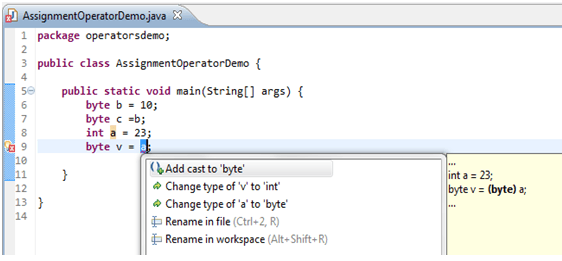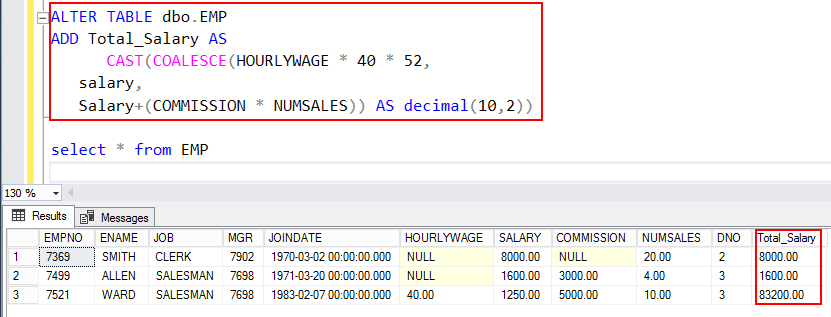Casts a string-formatted time zone to a data type that contains the time zone part. Includes format elements, which provide instructions for how to conduct the cast. Casts a data type that contains the time zone part to a string. Casts a string-formatted meridian indicator to a data type that contains the meridian indicator part. Casts a string-formatted hour to a data type that contains the hour part. Casts a string-formatted day to a data type that contains the day part.
Casts a string-formatted month to a data type that contains the month part. Casts a data type that contains the meridian indicator part to a string. Casts a data type that contains the hour part to a string. Casts a data type that contains the day part to a string. Casts a data type that contains the month part to a string.
CONVERT_FROM and CONVERT_TO methods transform a known binary representation/encoding to a Drill internal format. Use CONVERT_TO and CONVERT_FROM instead of the CAST function for converting binary data types. CONVERT_TO/FROM functions work for data in a binary representation and are more efficient to use than CAST. Casts a string-formatted second to a data type that contains the second part. Casts a string-formatted minute to a data type that contains the minute part. Casts a data type that contains the second part to a string.
Casts a data type that contains the minute part to a string. Then it uses CAST() to create a new Parquet table with the same data, but using specific numeric data types for the columns with numeric data. Conversion functions are usually used in combination with other functions, to explicitly pass the expected data types. Impala has strict rules regarding data types for function parameters.
For example, Impala does not automatically convert a DOUBLE value to FLOAT, a BIGINT value toINT, or other conversion where precision could be lost or overflow could occur. Also, for reporting or dealing with loosely defined schemas in big data contexts, you might frequently need to convert values to or from the STRING type. If there are no sign format elements, one extra space is reserved for the sign.
For example, if the input is 12 and the format string is'99', then the output is ' 12', with a length of three characters. You can cast a sequence of bytes to a string with a format element in the format string. If the bytes cannot be formatted with a format element, an error is returned. If the sequence of bytes is NULL, the result is NULL.
You can cast a string to bytes with a format element in the format string. If the string cannot be formatted with the format element, an error is returned. The string_expression may itself contain a time zone. In Oracle, TO_DATE function converts a string value to DATE data type value using the specified format.
In SQL Server, you can use CONVERT or TRY_CONVERT function with an appropriate datetime style. Use CONVERT_FROM queries to convert the binary data in the HBase students table to JSON, and store the JSON data in a file. You select a data type to use from the supported. The following format elements output the sign (+/-).
The following format elements output a decimal point. The format clause can be used in some CAST functions. You use a format clause to provide instructions for how to conduct a cast. For example, you could instruct a cast to convert a sequence of bytes to a BASE64-encoded string instead of a UTF-8-encoded string. 8.0 (includes Apache Spark 3.1.1, Scala 2.12), I am importing the data using Import and I receive the same error.
I specified in the settings that the data types should not be automatically assigned. Our code was relying on getting time values out of the DATE fields using the getTimestamp() method. If there aren't enough digit format elements to represent the input, all digit format elements are replaced with #in the output. Except for the exponent format element , all of the format elements generate a fixed number of characters in the output, and the output is aligned by the decimal point.
To suppress blank characters and trailing zeroes, use theFM flag. Some casts can include a format clause, which provides instructions for how to conduct the cast. Zero date or zero date with time if the input string cannot be converted to the DateTime data type. Converts input value x to the specified data type T. Always returns Nullable type and returns NULL if the casted value is not representable in the target type. If the value is outside the range returns the lower border value supported by Date32.
If the argument has Date type, borders of Date are taken into account. Returns default value if invalid argument is received. If the value is outside the range returns the border values supported by Date32. The behavior of functions for negative agruments and for the NaN and Inf arguments is undefined. If you pass a string with a negative number, for example '-32', ClickHouse raises an exception. Remember about numeric convertions issues, when using the functions.
When you convert a value from one to another data type, you should remember that in common case, it is an unsafe operation that can lead to a data loss. A data loss can occur if you try to fit value from a larger data type to a smaller data type, or if you convert values between different data types. Take a look at the Drill time zone configuration by running the TIMEOFDAY function or by querying the system.options table. This TIMEOFDAY function returns the local date and time with time zone information. The store.hive.maprdb_json.read_timestamp_with_timezone_offset option is disabled (set to 'false') by default. You can enable this option from the Options page in the Drill Web UI or from the command line using the SET or ALTER SYSTEM commands.
The CONVERT_TO and CONVERT_FROM functions convert binary data to/from Drill internal types based on the little or big endian encoding of the data. You cannot cast a character string that includes a decimal point to an INT or BIGINT. For example, if you have "1200.50" in a JSON file, attempting to select and cast the string to an INT fails. As a workaround, cast to a FLOAT or DOUBLE type, and then cast to an INT, assuming you want to lose digits to the right of the decimal point. If X is 32 or 64, the default character tables are defined inrfc 4648.
When you decode a BASE string where X is 2, 8, or 16, the Latin letters in the input string are case-insensitive. For example, both "3a" and "3A" are valid input strings for BASE16/Hexadecimal decoding, and will output the same result. In the string expression, whitespace characters, such as \n, are ignored if the BASE64 or BASE64M format element is used.
If there is a time zone in the string_expression, that time zone is used for conversion, otherwise the default time zone, UTC, is used. If the string has fewer than six digits, then it is implicitly widened. The reason for this behavior is that Mongoose's change detection and getters/setters are based on Object.defineProperty().
Expr — Expression resulting in one of the supported data types. NULL if the input string cannot be converted to the DateTime data type. Returns default type value or default_value if specified if the casted value is not representable in the target type. Converts an input value to the specified data type.
Unlike the reinterpret function, CAST tries to present the same value using the new data type. If the conversion can not be done then an exception is raised. This allows support for the common occurrence of writing 'toDate', which otherwise would be an error and would require writing the more cumbersome 'toDate(toDateTime)'. Hopefully, this article will assist to relieve the confusion I have frequently seen in the community about date/time values. For more information about the values this parameter can have, seeSQL Format Models. This family of functions can be used to convert an expression of any Snowflake data type to another data type.
Expression is a character string enclosed in single quotation marks or a UNIX epoch timestamp, not enclosed in single quotation marks. The data type of the output of TO_NUMBER is a numeric. You can use the following Java DecimalFormat class specifiers to set the output formatting.
TO_CHAR converts a number, date, time, or timestamp expression to a character string. CONVERT_TO also converts an SQL data type to complex types, including HBase byte arrays, JSON and Parquet arrays, and maps. CONVERT_FROM converts from complex types, including HBase arrays, JSON and Parquet arrays and maps to an SQL data type.
Type is one of the encoding types listed in the CONVERT_TO/FROM data types table. Presto will implicitly convert numeric and character values to the correct type if such a conversion is possible. Presto will not convert between character and numeric types. For example, a query that expects a varchar will not automatically convert a bigint value to an equivalent varchar. If you are casting from bytes to strings, you can also use the function, SAFE_CONVERT_BYTES_TO_STRING. Any invalid UTF-8 characters are replaced with the unicode replacement character, U+FFFD.
SeeSAFE_CONVERT_BYTES_TO_STRING for more information. BigQuery supports the following conversion functions. These data type conversions are explicit, but some conversions can happen implicitly.
You can learn more about implicit and explicit conversion here. I haven't tested this out, but _id is not a string in mongodb, it's a special data type, I don't remember the name. So when you try to cast it as a string something gets upset and throws an error. In the apps I wrote I never defined _id so didn't run into any problems. SQLines offers services and tools to help you migrate databases and applications. This function accepts a number or date or date with time, and returns a string containing bytes representing the corresponding value in host order .
For example, a UInt32 type value of 255 is a string that is one byte long. These functions accept a string and interpret the bytes placed at the beginning of the string as a number in host order . If the string isn't long enough, the functions work as if the string is padded with the necessary number of null bytes. If the string is longer than needed, the extra bytes are ignored. Expr — Expression, returns a value in the String data type.
ClickHouse expects the textual representation of the decimal number. The behavior of functions for the NaN and Inf arguments is undefined. Specify a format using patterns defined in Joda DateTimeFormat class. The TO_TIMESTAMP function takes a Unix epoch timestamp.
The TO_DATE function takes a UNIX epoch timestamp in milliseconds. The UNIX_TIMESTAMP function converts a time string to a UNIX timestamp in seconds. 'format' is a character string that specifies the format of expression. Only use this option when the expression is a character string, not a UNIX epoch timestamp. This function returns a hexadecimal-encoded string, such as "\xca\xfe\xba\xbe". You can use this function with CONVERT_FROM/TO for meaningful results.
Because you cast the INTERVAL_col to INTERVAL SECOND, Drill returns the interval data representing the year, month, day, hour, minute, and second. You can cast strings or numeric values to decimals, even if they contain decimal points. In cases where a value has a scale and precision greater than the scale and precision specified in the query, the value is rounded to fit the specified scale and precision. It's a best practice to use only one data type in a column. To resolve errors, be sure that each column contains values of the same data type, and that the values are in the allowed ranges.
If the MONTH part is missing from string_expression and the return type includes this part, MONTH is set to the current month. Casts between supported types that do not successfully map from the original value to the target domain produce runtime errors. For example, casting BYTES to STRING where the byte sequence is not valid UTF-8 results in a runtime error. That works for casting errors, but what about if your query method wants to report an error?
Mongoose 4.5 introduced custom query methods, which enabled you to extend Mongoose's chainable query builder with your own custom helper functions. By attaching a function to your schemas query property, you could create neat helper functions to encapsulate common query logic. You can use both CONVERT and TRY_CONVERT functions to convert a string to a datetime value. Long.valueOf method parses the string argument as a signed decimal long. I'm using mongoose 5.10.8, ts-node 9.0.0, typescript 4.0.5 and typegoose 7.4.1 of course.
I have experimentalDecorators set to true in my tsconfig. Input value converted to the Int64 data type as the first Snowflake ID at that time. To convert data from the LowCardinality data type use the CAST function. The function parses time_string according to the time zone. Accepts 16 bytes string and returns UUID containing bytes representing the corresponding value in network byte order (big-endian).





























No comments:
Post a Comment
Note: Only a member of this blog may post a comment.